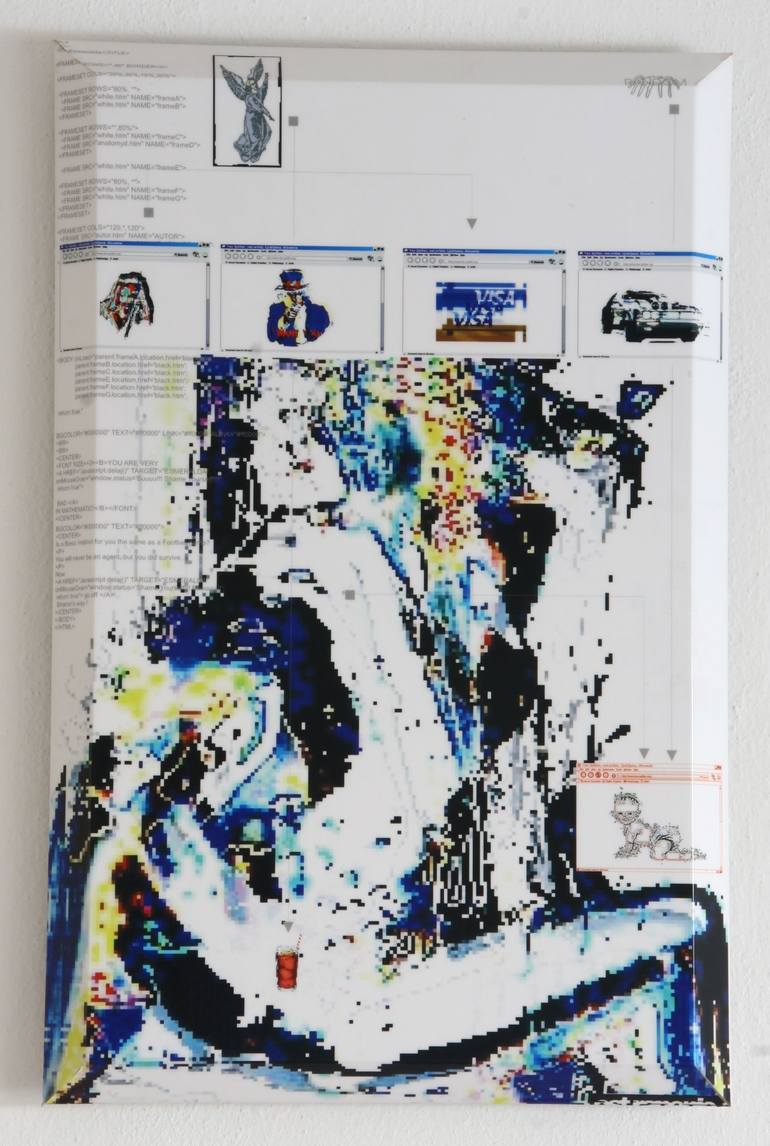


VIEW IN MY ROOM
Esmeralda Artwork
Slovenia
Digital, Digital on Paper
Size: 15.7 W x 23.6 H x 1.6 D in
About The Artwork
Unlike the random links in Parker’s “Smile” and Rettberg’s “Passenger” which are placed outside the text space of the narrative proper, the random links in Teo Spiller’s “Esmeralda” (1999) are objects and texts incorporated in the detective adventure proper, aiming to provide a more powerful mechanism in diverging paths. The lexias that each of his random links can choose from are small in number. This fact, however, does not affect the ability of “Esmeralda” to attain a structure of complexity commensurate to that of a conventional hypertext, since all lexias are candidates for each “destination” position in a path. Spiller’s random links do not have the intention to invoke the resonating effects embedded in sylleptic points. They serve to connect independent missions into a coherent adventure. The random links are designed as such to present an illusion to delude the user that he is playing the role of a detective in the quest of unfolding a mystery. Or, he is playing a competitive game. However, after several trials, the user may come to realize that it is a game stripped of binary win-lose logic, or an un-winnable game that uniformly leads the player to the page of “BUM! BUM! BUM! ”, or occasionally the “game over” page, rewarding the user with symbolic death. It is a pseudogame. Before the trick reveals itself, the random links fluctuate between the state of being key points and that of being non-key points. When the user realizes it is a pseudo-game, a literary paidia rather than ludus, these links turn into interactive points deprived of game-surprise, or blank points for the mere purpose of setting the navigation in motion. ( From Shuen-shing Lee, Interactive Points in Literary Hypertexts: A Typology: Code at Work, Text at Play, Taipei: Bookman, 2004. Chapter 3 )
Details & Dimensions
Digital:Digital on Paper
Original:One-of-a-kind Artwork
Size:15.7 W x 23.6 H x 1.6 D in
Frame:Not Framed
Ready to Hang:No
Shipping & Returns
Delivery Time:Typically 5-7 business days for domestic shipments, 10-14 business days for international shipments.
Have additional questions?
Please visit our help section or contact us.
Slovenia
I use machines to create art, wondering if machines will one day understand my art. Computers, mobile phones and robots are strongly getting into our minds. We are more and more behaving like machines, while Intelligent devices are more and more behaving like humans. Once there might be no difference between the machine and the human at all. I examine different forms our technology based society takes, and the motives that lie behind it. I use the copy-paste culture, post-production and modularity as the common denominators of the digitized worlds. Altering them is a way of questioning the attitudes, fears, unwritten rules, opportunities and dangers which have formed that environment and our behavior within it. Aesthetics and ontology of my work are strongly related to my working process. I take icons, symbols and other entities from the mediated reality and combine them in algorhytmic ways. I strive to convey that sense of algorhytmic simplicity by capturing its algorhytmic language.
Thousands Of Five-Star Reviews
We deliver world-class customer service to all of our art buyers.
Global Selection
Explore an unparalleled artwork selection by artists from around the world.
Satisfaction Guaranteed
Our 14-day satisfaction guarantee allows you to buy with confidence.
Support An Artist With Every Purchase
We pay our artists more on every sale than other galleries.
Need More Help?